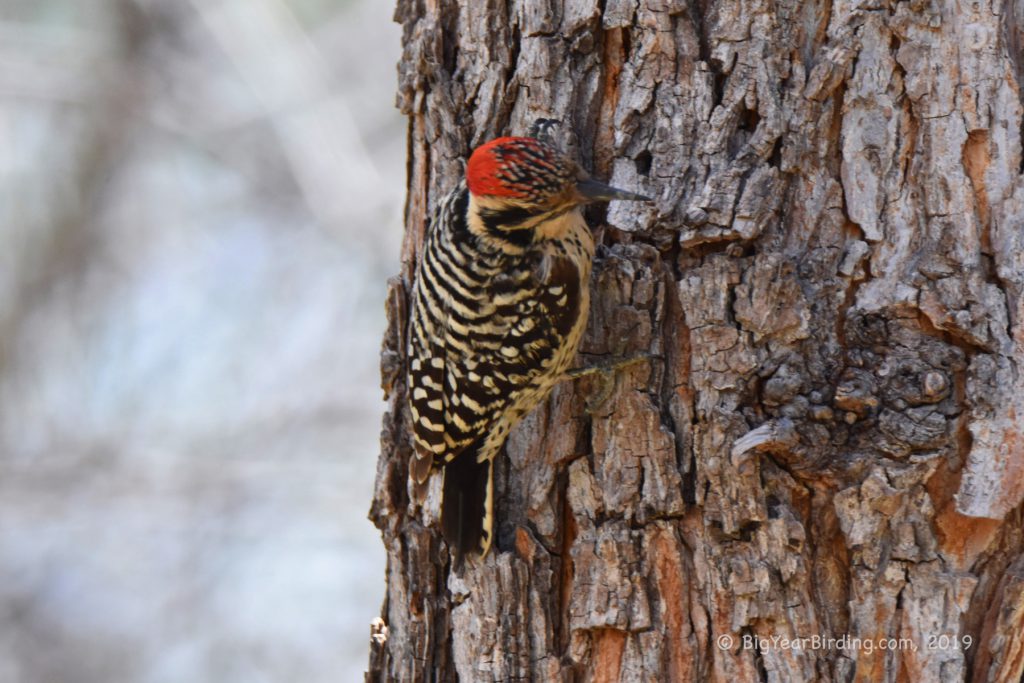The ladder-backed woodpecker is a small bird that is approximately 7.5-8.5 inches in length and weighs approximately 1.2 ounces. It has distinctive black and white stripes on its back, resembling a ladder, hence its name. The male bird has a red patch on the back of its head, while the female has a black patch. The wingspan of the ladder-backed woodpecker is approximately 13 inches.
The ladder-backed woodpecker is found in a variety of habitats including deserts, brushlands, and forests. It is commonly seen in areas with mesquite trees, which provide an abundant food source for the bird. The bird feeds on insects, spiders, and other small invertebrates. It uses its strong bill to peck at the bark of trees to find its food, making it an important species for controlling insect populations.
Distinguishing field marks of the ladder-backed woodpecker include its black and white striped back, its size and weight, and its distinctive red or black patch on the back of its head. The bird also has a white belly and black and white stripes on its tail. These field marks make it easy to identify, even from a distance.
The ladder-backed woodpecker is a non-migratory species and is found year-round in its native range, which extends from southwestern United States to Central America. However, some populations may move short distances within their range in response to changes in food availability or to avoid harsh weather conditions. The bird’s range has expanded in recent years as a result of human-mediated habitat changes, including the planting of mesquite trees and the expansion of deserts and brushlands.
In conclusion, the ladder-backed woodpecker is a distinctive and important bird species that plays a role in controlling insect populations. Its ladder-like back and red or black patch on its head make it easy to identify, and its non-migratory behavior makes it a common sight in its native range. Despite its small size and weight, the ladder-backed woodpecker is a valuable species for both ecological and aesthetic reasons.

